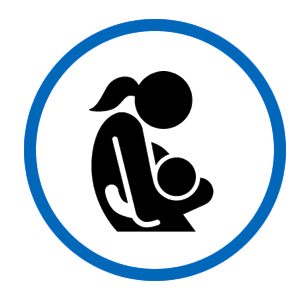Initiation of breastfeeding within the first 1 hour of life can prevent up to 22% of newborn mortality.1Impact of early initiation of exclusive breastfeeding on newborn deaths
A&T Technical Brief
January 2010 This is a one-time behavior that requires a baby be immediately placed on a new mother’s chest after birth.

Early Initiation of Breastfeeding
Mothers initiate breastfeeding within one hour after delivery
Key Points from Global Research
- Addressing cultural as well as institutional practices that separate mother and infant after birth can encourage early initiation of breastfeeding and foster the practice of exclusive and continued breastfeeding.
- Helping mothers and families understand the importance of immediate suckling, even without milk, can facilitate exclusive breastfeeding.
Behavior Profile Sample: Early Initiation of Breastfeeding
A Behavior Profile is a summary analysis of each behavior. This sample draws from global evidence and illustrates the result of using the Create Behavior Profiles Tool to analyze factors, supporting actors and strategies and to ensure logical pathways exist between strategies proposed and factors related to the practice of the behavior. This sample may be used as a starting point or reference for creating Behavior Profiles.
| Improve maternal and child survival | |
|
Mothers initiate breastfeeding within one hour after delivery Among last-born children born in the two years preceding the survey the percentage who started breastfeeding within 1 hour of birth
|
Behavior Analysis |
Strategy | ||
|---|---|---|---|
STEPSWhat steps are needed to practice this behavior?
Click on any box |
FACTORSWhat factors may prevent or support practice of this behavior? These should be analyzed for each country context.StructuralAccessibility: There is a lack of enforcement or existence of policies banning distribution of breast milk substitutes in health facilities Accessibility: Environment is crowded with promotion and presence of breast milk substitutes Service Provider Competencies: Providers lack skills required to counsel on importance of and techniques for early initiation Service Provider Competencies: Babies are often separated from mother immediately to be cleaned or wrapped and often kept separated SocialFamily and Community Support: Extended families do not always support new mothers with immediate breastfeeding, especially if the baby is born at home Norms: Babies are often immediately given other fluid, food or substance based on cultural practices InternalAttitudes and Beliefs: Many mothers do not understand the benefit of early breastfeeding and colostrum Self-Efficacy: Mothers feel they might not have enough or any milk |
SUPPORTING ACTORS AND ACTIONSWho must support the practice of this behavior?InstitutionalPolicymakers: Pass and enforce the international code preventing marketing of the Breast Milk Substitutes (BMS) Policymakers: Institutionalize baby-friendly hospital initiatives within the health system Providers: Counsel on early initiation of breastfeeding during antenatal care visits Providers: Support the need to keep mother and baby together immediately after birth Providers: Train mothers on techniques of early initiation and the need to avoid any other prelacteal feeding HouseholdFamily Members: Support and assist with early initiation |
POSSIBLE PROGRAM STRATEGIESHow might we focus our efforts based on this analysis?Enabling EnvironmentPolicies and Governance: Create structured policy frameworks (e.g. Baby Friendly Hospitals) that keep mother and baby together Policies and Governance: Enact regulations to ensure adherence to BMS Code Systems, Products and ServicesQuality Improvement: Ensure health facilities have a provider trained in lactation Demand and UseCommunication: Add early initiation to the full range of counseling materials used during antenatal care visits and pregnancy support groups and organize community dialogues and home visits before pregnancy to discuss and prepare with family members Skills Building: Work with traditional birth attendants on the importance of supporting women with immediate breastfeeding |
Global Status of Accelerator Behavior
Among last-born children born in the two years preceding the survey the percentage who started breastfeeding within 1 hour of birth
Demographic and Health Survey, Rapid Survey on Children, UNICEF Multiple Indicator Cluster Surveys
